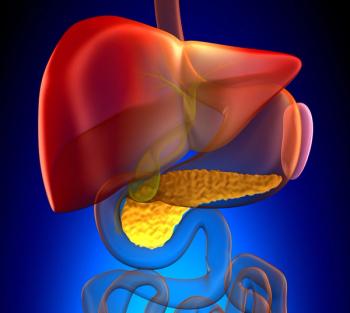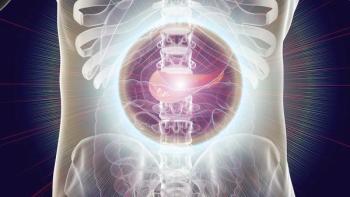
Oncology NEWS International
- Oncology NEWS International Vol 16 No 1
- Volume 16
- Issue 1
Familial Pancreatic Ca Gene Mutation Discovery
Mutation of palladin, a cytoskeletal gene that controls cell shape and motility, and overexpression of palladin protein are implicated in both familial and sporadic forms of pancreatic cancer, respectively, and explain the typical nuclear disarray seen histologically in patients with the disease
NEW YORKMutation of palladin, a cytoskeletal gene that controls cell shape and motility, and overexpression of palladin protein are implicated in both familial and sporadic forms of pancreatic cancer, respectively, and explain the typical nuclear disarray seen histologically in patients with the disease, Teresa A. Brentnall, MD, of the University of Washington, Seattle, said at a briefing. In a paper published online in PLoS Medicine (Dec. 2006), Dr. Brentnall and her coinvestigators said the findings suggest the abnormal palladin gene "may be responsible for or contribute to the tumor's strong invasive and migratory abilities."
Dr. Brentnall's search for the gene began about 10 years ago: "A 40-year-old healthy-appearing male patient told me he was afraid he would get pancreatic cancer, because his father, grandfather, four uncles, and three cousins had it," she said. This meeting initiated an ongoing genetic and histologic analysis of "family X," a family of western European descent found to have autosomal dominant inheritance of pancreatic adenocarcinoma, with high penetrance, and subsequently of individuals from families with sporadic pancreatic cancer.
By genotyping 35 family X members, they were able to map a susceptibility locus to a gene region on chromosome 4 (4q32-34). They then evaluated DNA snippets from the 4q32-34 region, from one family X member with precancer, 10 people with sporadic pancreatic cancer, and 10 normal individuals.
They found palladin RNA overexpressed only in family X precancer and sporadic familial pancreatic cancer, making palladin likely to be a proto-oncogene. They also found that the more cancer-like the cells became (from normal to moderate precancer), the more palladin protein was overexpressed.
Have Gene, Will Travel
The palladin mutation seen in family X occurs in a region that encodes the key binding site for alpha-actinin, an important cytoskeletal protein. Cells with mutated palladin have distorted actin that may contribute to their increased cellular motility. In a cell-migration assay assessing motility of cells transfected with the normal palladin gene, mutated palladin, or an empty vector, migration through membranes occurred at a rate 42% faster in cells with the palladin mutation, compared with normal cells. Pancreatic ductal cells with mutated palladin have "hundreds" of lamellopodia, or "feet," Dr. Brentnall said, which may account for their increased motility and invasiveness (see Figure).
Using endoscopic ultrasound and pancreatography to evaluate pancreatic tissue, the researchers have followed 75 patients from 50 high-risk families in the last 10 years; 15 patients (7 from family X) have had widespread precancer. All had total pancreatectomy; none has developed pancreatic cancer.
Articles in this issue
almost 19 years ago
Nab-Paclitaxel Bests Docetaxel in First-Line Met Breast Caalmost 19 years ago
Congress Plans to Keep NCI Operating at FY2006 Budgetalmost 19 years ago
Lenalidomide Is Active in Relapsed and Refractory NHLalmost 19 years ago
Self-Hypnosis Reduces Anxiety During Breast Biopsyalmost 19 years ago
With Decrease in HRT Use, Breast Ca Incidence Rates Fallalmost 19 years ago
MK-0457 'Glides Past' Bcr-Abl T315i Mutationalmost 19 years ago
Dasatinib Superior to High-Dose Imatinib in Resistant CMLalmost 19 years ago
Lilly 2006 Oncology on Canvas Winners 'Embrace Life'Newsletter
Stay up to date on recent advances in the multidisciplinary approach to cancer.
















































































